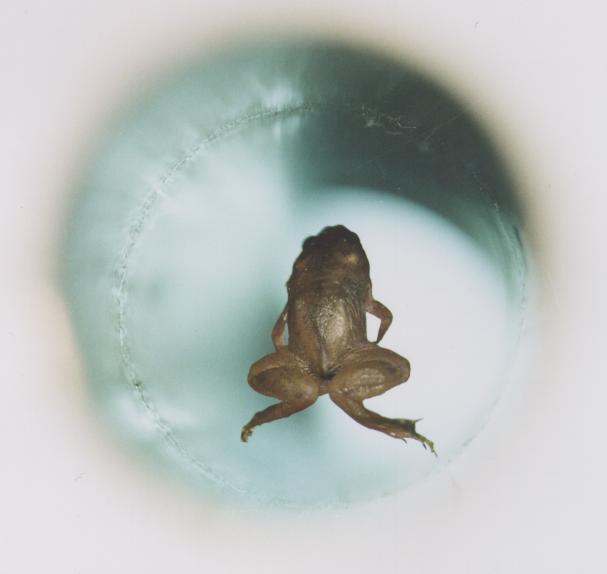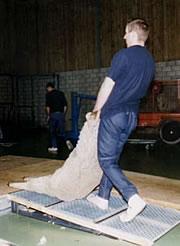Professor Bruce Hood is a Professor of Developmental
Psychology in Society. He is specifically interested in cognitive development
from a neuroscience perspective, but also works on face and gaze processing,
inhibitory control of thoughts and actions, spatial representation and action,
naïve theories and the origin of adult magical reasoning from children’s
natural intuitions. If you want any more information about what he and his
group then follow this link: http://www.bristol.ac.uk/expsych/people/bruce-m-hood/
Where did you go to
university and what did you study?
“My first university was the University of Dundee in
Scotland where I did an arts degree. In Scotland you can do a four year degree
and take lots of different topics, I didn’t know anything about psychology and
I was doing things like economics, accountancy and finance but I had to take
another subject and so I took psychology and fell in love with it! This made me
decide that I wanted to be a psychologist! So I went to Cambridge and did my
PHD there, so I’ve been in Scotland and Cambridge.”
How did you get from
there to where you are now in Bristol?
“How long have you got?!
After Cambridge I had a position at UCL and then I got a MRC
(medical research council) travelling fellowship which enabled me to go
anywhere in the world and I went to MIT. So I did my post-doctorate at MIT and
then I applied for a position at Harvard and I was an associate professor there
for five years. Then I came to Bristol.”
How would you
describe your area of research to someone who’s not in the field?
“Well I have very diverse interests but I suppose they all
deal with aspects of development of mind - in the childhood origins of how we
think as adults. I’m interested in children not because they’re kids but
because I think they give a great insight into the complexity of adult
behaviour and the human mind and also some indication as to how we’ve evolved
complexity.”
How would you describe your typical day and your typical
research? It’s obviously different to that of a chemist let’s say…
“Well unfortunately I
don’t have the luxury of doing the research myself directly, although occasionally
I will help out. I really love conducting research and collecting data but
because I’ve got so many projects running simultaneously I can’t actually
collect data myself. So usually it’s working with my post-docs and my
grad-students to devise and design experiments, piloting them here in the
centre and then very often taking them out into the community.
We do research at the
@Bristol Science Museum, but we also collect data in the schools, so it’s a lot
of what you would regard as field work. But if we were using a technology which
doesn’t transport like eye-movement recordings or ERP (Event Related Potentials
–brain signals) then we would do that in the lab.”
If you could go back to conducting the field work yourself
would you do that or are you happy with where you are now?
“Yeah I am happy where I
am now, but I’ve not lost touch with the sheer joy of data collecting. For me,
experimentation is just wondrous and the fact that I can be paid for something
that I enjoy so thoroughly is fantastic and I love to share that! I mean there
are so many questions that I’d like to answer and I couldn’t answer them myself
so I need to have people doing it for me and that’s why we have research students
doing that all. I mean I would be delighted if I was just doing research.”
What advice would you give to someone looking for a career
in science?
“Passion! That’s what
gets you out of bed in the morning!
You have to have a sense
of wonder and joy and curiosity, and if this is what you want then this should
be enough to drive you forward, and if you have the confidence to do so then
you should be fine.”
What has been your proudest achievement to date?
“Well I suppose it has to
be giving the royal institute Christmas lectures on the BBC. I’m very
passionate about what I do and I really want to take science out into the
community and that is the pinnacle of public engagements so that gave me, for a
very short time, a platform and a spotlight, which was really quite
exceptional. I got to meet so many amazing people, I got to inspire people and
I’ve had email correspondence from parents of young children – they still
contact me three years later keeping me up to date with their achievements in
science and I find that extraordinarily valuable to realise that what you do
actually changes people’s lives and makes a difference.
I’ve always felt that we (psychologists) have
a bit of an identity problem that people don’t see us as a real science and
that really annoys me. So that’s my other agenda, to make sure people
understand how complex the mind can be and that it’s not common sense at all.
There are some extraordinary things that we are yet to discover. So yeah I’m
passionate about science communication.”
If you could do science with anyone, dead or alive, who
would it be?
“Gosh, so many to choose
from!
One of my greatest
mentors was Richard Gregory. You may not know, but Richard Gregory was and
still is a great influence on many of us. Richard effectively started the first
science museum, the Exploratorium here in Bristol, and he was a great and
passionate science communicator. He did some really brilliant work on vision
and perception, has illusions named after him – everyone who works in my field
of perception will know of Richard Gregory. He was of a genre with a connection
to the past, he knew Wittgenstein, he was taught by some of the great names, so
he made this connection for me with the past. But he was just so enthusiastic
and so passionate – it was infectious, he was like a little child at times when
he was talking about things! And really that’s what’s so important to me about
science.
People think that science
is dull and boring and of course it isn’t! You and I know that it’s actually
very fulfilling, and communicating that
passion in a way which is sensible to the general public is what my agenda is.”











